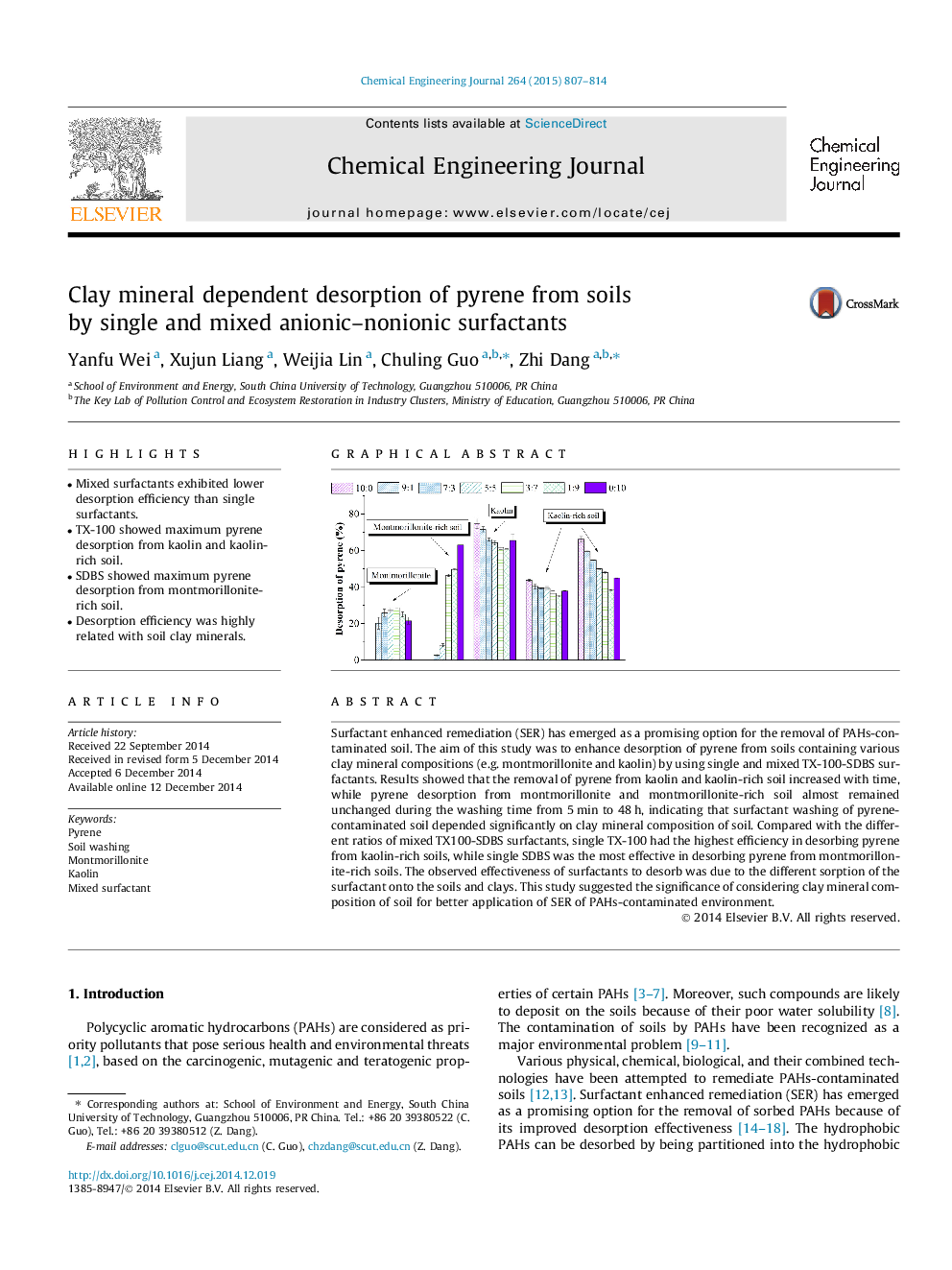| Article ID | Journal | Published Year | Pages | File Type |
|---|---|---|---|---|
| 146875 | Chemical Engineering Journal | 2015 | 8 Pages |
•Mixed surfactants exhibited lower desorption efficiency than single surfactants.•TX-100 showed maximum pyrene desorption from kaolin and kaolin-rich soil.•SDBS showed maximum pyrene desorption from montmorillonite-rich soil.•Desorption efficiency was highly related with soil clay minerals.
Surfactant enhanced remediation (SER) has emerged as a promising option for the removal of PAHs-contaminated soil. The aim of this study was to enhance desorption of pyrene from soils containing various clay mineral compositions (e.g. montmorillonite and kaolin) by using single and mixed TX-100-SDBS surfactants. Results showed that the removal of pyrene from kaolin and kaolin-rich soil increased with time, while pyrene desorption from montmorillonite and montmorillonite-rich soil almost remained unchanged during the washing time from 5 min to 48 h, indicating that surfactant washing of pyrene-contaminated soil depended significantly on clay mineral composition of soil. Compared with the different ratios of mixed TX100-SDBS surfactants, single TX-100 had the highest efficiency in desorbing pyrene from kaolin-rich soils, while single SDBS was the most effective in desorbing pyrene from montmorillonite-rich soils. The observed effectiveness of surfactants to desorb was due to the different sorption of the surfactant onto the soils and clays. This study suggested the significance of considering clay mineral composition of soil for better application of SER of PAHs-contaminated environment.
Graphical abstractFigure optionsDownload full-size imageDownload as PowerPoint slide
